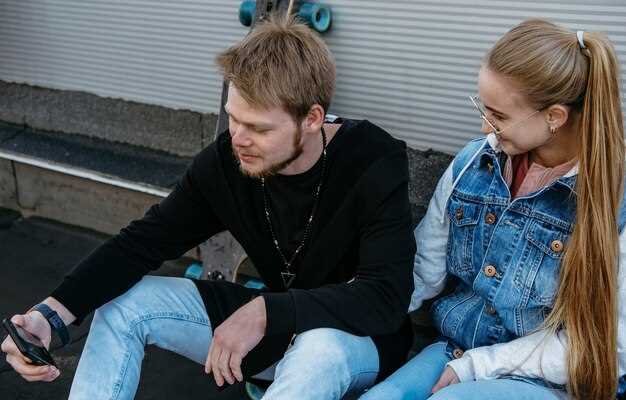Sign up for two hobby-focused meetups and one exercising class within the first month: register on Meetup or a community center site, add calendar invites, and commit to attending at least four sessions that month. These concrete targets remove decision friction; initial contacts arent immediate friends but create repeat touchpoints, so set a 48-hour follow-up routine and be prepared that some invitations will be gone after no-shows. No special gear need – focus on consistency and going to events rather than perfect performance.
If thrown into unfamiliar routines, use micro-invitations: ask a new acquaintance to join a 20-minute coffee break, propose a short neighborhood walk, or suggest a shared project. Be capable of sending a concise follow-up message (name, where met, topic) and keep little notes for recall. Mix formats: a weekly writing workshop plus a Saturday reading circle expose common interests; when trying to connect, mirror small gestures from others and offer yours first.
Use short videos to learn transit routes and venue locations – three clips per line is enough preparation. If feeling down, prioritize exercising and one outdoor meetup per week; physical activity creates shared schedules and reduces social friction. A realistic timeline would be: stable contacts form in about three months and a core circle develops over a year; many awkward phases are generally gone once the same weekly rhythms are established and momentum comes from consistent presence.
Practical steps to connect without rushing into dating
Pick one recurring group (language table, book club, fitness class) and attend four sessions within six weeks; this does create measurable opportunity for low-pressure rapport.
- Schedule: 2 events per week; expect to meet 4–8 new people each week and add 3–5 contacts to a simple spreadsheet or phone list. Keeping a log of where and when interactions happen helps track momentum.
- Follow-up routine: send one brief message within 48 hours referencing a shared detail; if they hadnt replied after two attempts, pause rather than push – pressure often harms outcome.
- Timebox conversations: limit new social chats to 15–20 minutes for the first three meetings; short interactions reduce emotional overload and prevent people-pleaser drift.
- Intent labeling: when single and seeking friends, state social intent (“here to meet people”) early; it prevents mixed signals and avoids turning every connection into a crush scenario.
- Local research: spend 30 minutes per week watching local youtube videos and reading 2 community threads; as a viewer, note venues, typical attendance, and distance. Prefer spots within 5–10 miles for regular meetups to avoid transit barriers.
- Skill-first approach: join a 6-week course or study group (photography, coding, language) where skills require repeated sessions; the work-based structure produces natural reasons to meet again and reduces dating assumptions.
- Offer low-stakes value: bring a portable snack, share a printed resource, or volunteer 2 hours/month; giving small, specific help creates reciprocity without romantic framing.
- Boundary checklist: before sharing personal worries, run them past a therapist or journal; dumping heavy topics onto new contacts can push them away. Keep vulnerability graduated: surface → moderate → deep across 4–6 interactions.
- Contact cadence: aim for one in-person, one short message, and one public-group comment per two weeks for new friends; this keeps connections active without overwhelming them socially.
- Behavioral markers: track whether they initiate at least once in three meetings; if they never reach out, treat that as data, not failure – reallocate time to contacts who become closer.
Concrete metrics to apply for 8 weeks: attend 16 events, collect 20 contacts, convert 4 into regular friends (monthly meetups). If outcomes skew toward dating pressure or repeated ghosting, review reason patterns: timing, venue, or communication style; adjust by moving onto a different group or altering follow-up tone.
Practical advice for online-to-offline transitions: list three local creators whose videos show real events; spend 15 minutes before an event watching related videos so the viewer can reference specific details in conversation. When getting introduced, use a single-line opener about the shared activity rather than personal background.
Metrics to avoid burnout: limit social spending to 6 hours/week and 30 miles total travel for social activity; track money and time spent so friendships are sustainable. If a contact becomes a recurring pleaser or asks for favors beyond comfort, set a clear boundary and reduce interaction frequency rather than abruptly dump the relationship.
Keep notes on what kind of interactions produced the best results (topic, timing, setting). Over 12 weeks, a simple study of those notes will show where to invest next and which approaches had the highest likelihood to become steady connections.
Set Boundaries Before You Move: Define Your Dating Rules
Decide three firm rules before the move: no overnight stays for the first 60 days, limit to two romantic dates per week, and share live-location access with a trusted friend after the second date; call that friend if plans change and dont give out keys sooner than six months.
Write down core beliefs about what makes a fulfilling partnership and rate each value 1–5; anything under 3 triggers a pause. Research says people who rate emotional availability and mutual respect higher report being more content, so list dealbreakers and what one prefer on finances, children and time investment.
Create explicit rules for flirting and public interaction: no flirting with coworkers on shift, no swapping private social credentials until exclusivity, and color-code a calendar that lets two or three friends see availability together. Limit mutual access to contacts and shared spaces so early entanglements dont blur practical priorities.
If a connection starts serious sooner than planned, call a close friend and review past relationships; a small upfront investment in vetting significantly lowers later friction. Sometimes chemistry feels nice but couldnt replace aligned goals; thats when the process itself should impose a pause, maybe extending the timeline to cohabit until both feel content.
Kick Off with Community: Groups, Classes, and Volunteer Roles
Enroll in three repeat activities within 30 days: one fitness session for exercising (twice weekly), one small hobby class (weekly), and a volunteer role of at least eight hours a month.
Pick groups with 8–25 regulars; that size makes interactions manageable and increases the chance to follow up. Bring a simple follow-up plan: exchange contact details with 2–3 people per session and send a message within 48 hours. Consistent attendance for 6–12 weeks moves acquaintances closer to friends.
Search platforms: local rec center bulletin, Meetup, library boards, faith-based groups, and neighborhood Facebook pages. If you are already interested in gardening or language practice, choose beginner-friendly listings; franco on the community garden sign-up is often the contact at the bottom of the flyer. Prefer roles labeled “ongoing” rather than one-off events to sustain momentum.
Volunteer positions that provide visible tasks and brief handovers (info desk, event setup, tutoring) give the highest social return: aim for roles with weekly or biweekly shifts so people see you repeatedly. A civic engagement study found that 8–12 hours/month produced a huge increase in stable contacts over three months. These roles also provide practical support networks when a serious problem arises.
For exercise-based options, pick classes where partners rotate; exercising together reduces awkwardness and makes shared routines. If a session is held within a 3-mile radius you can attend without long travel, attendance is easier to sustain. Keep commitments light at first: a perfect initial goal is three sessions per week across activities, then increase if it feels right.
Use conversation starters that create depth: ask about a recent project, request a quick tip, or invite someone to follow a related workshop. Personal stories give context and make responses more human – people often thank volunteers or classmates and then offer support. If you imagine meeting people will be a serious problem, try two low-pressure events first; small successes deeply change confidence.
| Week | Activity | Hours | Estimated new contacts | Action | Distance (miles) |
|---|---|---|---|---|---|
| 1 | Group fitness (cardio) | 2 | 2 | Exchange contacts + follow next day | 1.2 |
| 1 | Language meetup (beginner) | 1 | 3 | Invite 1 person to class | 2.5 |
| 2 | Volunteer shift (info desk) | 4 | 4 | Ask to join ongoing rota | 0.8 |
| 3–6 | Hobby workshop (weekly) | 1/week | 1–2/month | Share a project update; offer help | 2.0 |
Track outcomes for 12 weeks: log contacts, follow-ups, and which activities helped most. If efforts don’t yield results, iterate: swap one activity for a novel option or pick a different time slot to reach further networks. These steps make the transition manageable and give real hope that connections will sustain beyond initial months. You are assured that small, repeated actions produce measurable progress and often lead to deeply supportive relationships.
Fill Your Schedule with Friends and Hobbies, Not Dates
Block 10 hours weekly: two 90-minute hobby sessions, one 3-hour weekend group outing, and two 30-minute catch-ups with friends – treat these as paid appointments so they don’t get bumped by last-minute swipes.
Join three interest groups that meet regularly: a weekday class (crafts or fitness), a weekend meetup, and one monthly workshop. Follow local event calendars and neighborhood social feeds for low-cost options; typical per-session cost ranges $10–45, league fees $25–75/month depending on venue.
If a viewer asks honestly which builds a social life faster, the data favors sustained activities over dates: consistent attendance leads to repeated exposure to the same people, which almost always converts acquaintance to friend. Dont chase single encounters; fill your calendar so someone sees you more than once.
If public transit is unfamiliar, budget realistically: ride-hailing trips average $8–18 in many states, while monthly passes run $60–120. Compare costs and commute time – sometimes paying drivers a modest fee saves hours and makes attending easier, which is better for retention.
Stop waiting for “someone” to rescue your free time. Stand at the center of planned activity rather than in a shell hoping others will invite you. If you didnt sign up for the third session that month you risk losing momentum; missing two meetups in a row makes re-entry harder and sometimes feels horrible, but rescheduling one concrete slot fixes that.
Practical rules: 1) RSVP to three events one week ahead; 2) explore two neighborhoods per month for new classes; 3) limit dating app time to 60 minutes weekly. Having a predictable rhythm reduces social friction, makes exploring less stressful, and gives others clear chances to follow up. Reality shows meaningful networks form over months and years, not single nights – be willing to leave short-term discomfort and keep showing up.
Use Dating Apps with Guardrails: Time Limits and Clear Intentions
Set a firm rule: limit in-app texting to 72 hours or three conversations, then propose a video call or an in-person coffee within two weeks; if a match passes those limits with zero movement, archive and move on. In practice, aim for no more than two first dates per week so dating doesn’t bleed into work or other commitments, and log times spent per week to avoid burnout.
Put intentions in your bio in plain language: “single, finding friends” or “looking for something serious” – short phrases reduce misreading. When messaging, use templates that state intent up front and invite reciprocity: “I’m into weekend hikes and quiet dinners; are you also looking for more than casual talk?” Use “thank” to close polite declines. Small effort in phrasing prevents mixed signals and helps with maintaining boundaries for both matches.
Apply safety guardrails: set a meeting radius (10–15 miles is a practical starting point), avoid sleeping over on first dates, and request a short video before meeting if they live in different countries. In case of late changes, set a zero-tolerance policy for no-shows: one no-show without notice = archive. If they bring up family during early chats (brothers, siblings), that can indicate social stability, but don’t treat it as proof of intent without follow-up.
Adjust tactics to demographics: younger cohorts may prefer casual timelines while older users with years of relationship history often expect clearer timelines; check profile indicators and reading of bios fully before matching. Keep active matches to a small number (3–5) to preserve quality over quantity; sometimes stepping back a little after a string of bad dates helps reset your approach. Track metrics: how many messages to first meet, miles traveled to meet, and how many times a plan hadnt been confirmed before cancelation – this data helps refine choices.
Concrete scripts to use:
Initial message: “Hi – I like that you mention reading and travel; are you into short calls this week or prefer texting?”
After matching: “I’m keeping matches to a few at once so I can focus; if you’re also interested, propose a time for a 15‑minute video this week.”
These guardrails reduce wasted effort, make expectations explicit for each person, and get both people to the bottom line faster while preserving safety and respect.
Reassess Your Needs After 6–8 Weeks: Are You Ready to Date?
Begin dating after 6–8 weeks only if at least three of the following measurable criteria are met.
Communities: active membership in two or more local communities with recurring contact (minimum 2 events or chats per week) – if social ties are sparse, wait until networks strengthen to avoid using dates as sole social fuel.
Morning routine & head clarity: consistent morning routine at least 5 of 7 days, sleep 7–8 hours, and mental-energy scores (self-rated) >=7/10 on four consecutive weeks; low morning anxiety gives better first-date presence and reduces ghosting risk.
Emotional stability: major relationship grief or disruption must be largely gone (intense episodes <1x>
Time & financial investment: willing to allocate a minimum of 4 hours/week and a modest discretionary budget for dating for at least 3 months; long-term goals and short-term plans should both survive a trial month without creating debt.
Apps performance: okcupid and other apps should produce ≥2 meaningful exchanges per week and at least one in-person meeting that feels safe; if app replies are low or interactions consistently go cold, optimize profiles before increasing dates.
Intent alignment: prospective partners must express interest in relationships beyond casual chat; look for language that starts with planning (eg. follow-up date within a week) rather than vague compliments about being cute – surface-level chemistry alone correlates poorly with success.
Boundaries & safety: assured boundaries about location, transport drivers, and meeting logistics; share plans with a trusted contact and avoid late-night first meetings in unfamiliar zones or across country distances until trust builds.
Support retention: do not dump existing support systems to prioritize a new fling; if friendships went quiet after initial dates, restore them before escalating commitment – this protects mental health and reduces pressure on nascent relationships.
heres a quick checklist to follow: three social touchpoints per week; morning routine stable 5/7; emotional lows managed; apps yielding at least two real conversations; finances and time allocated; at least one in-person follow-up within two weeks. thanks to this objective filter, decisions feel less impulsive and more assured.
If two or fewer boxes are checked, pause, re-evaluate headspace and plans, and focus on communities and routines until readiness improves – that approach gives better odds of long-term relationship success than rushing into dates.


 Moving to a New City Alone – It’s Less Lonely Than You Think">
Moving to a New City Alone – It’s Less Lonely Than You Think">


 Should I Break Up with My Boyfriend? Signs It’s Time to End It – A Practical Guide">
Should I Break Up with My Boyfriend? Signs It’s Time to End It – A Practical Guide">
 Dating Without Kids – Navigating Relationships When You Don’t Want Children">
Dating Without Kids – Navigating Relationships When You Don’t Want Children">
 How the 777 Method Revived Our Marriage – Fun and Happier Together">
How the 777 Method Revived Our Marriage – Fun and Happier Together">
 6 Reasons You Stay With the Wrong Man Too Long – How to Leave">
6 Reasons You Stay With the Wrong Man Too Long – How to Leave">
 How to Be Better at Being Alone – Practical Tips for Thriving in Solitude">
How to Be Better at Being Alone – Practical Tips for Thriving in Solitude">
 How Long Should You Wait Before Sleeping With Someone New? Timing and Boundaries">
How Long Should You Wait Before Sleeping With Someone New? Timing and Boundaries">
 What to Text After the First Date to Show You’re Serious">
What to Text After the First Date to Show You’re Serious">
 Men vs Women – How We Choose Our Partners — Dating Preferences, Criteria, and Relationship Dynamics">
Men vs Women – How We Choose Our Partners — Dating Preferences, Criteria, and Relationship Dynamics">
 6 Things To Stop Doing If You’re Looking For Love">
6 Things To Stop Doing If You’re Looking For Love">
 How to Maintain a Long-Distance Relationship When Moving Abroad – Essential Tips">
How to Maintain a Long-Distance Relationship When Moving Abroad – Essential Tips">